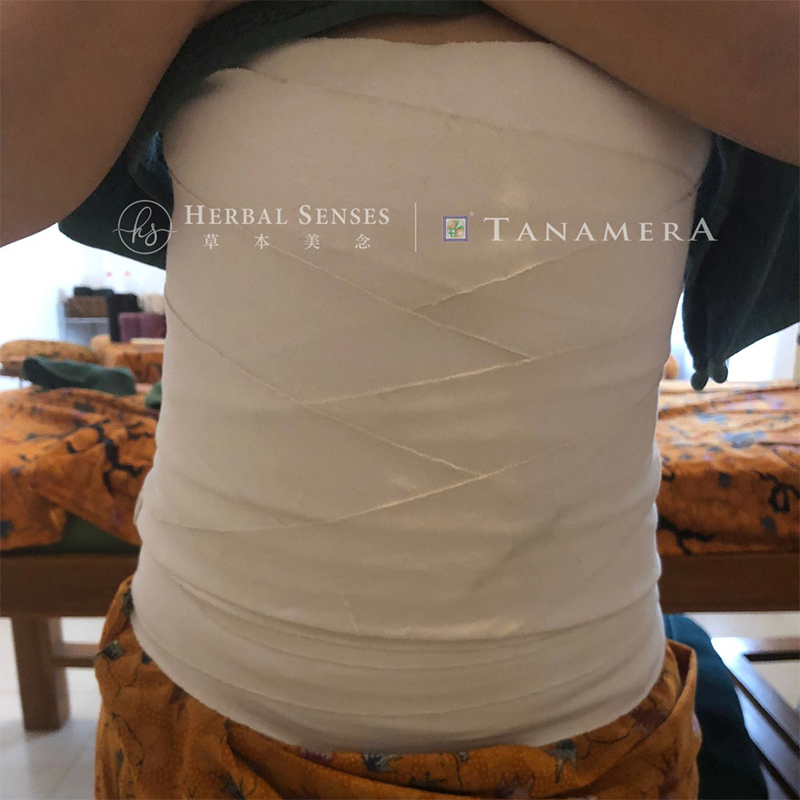【All About Belly Binding】Understanding the Three Major Traditional Belly Binding Methods
- Kalie Leung
- May 30, 2023
- 2 min read

Traditional belly binding, also called abdominal binding, has its roots in Malaysia and Indonesia. However, after more than 300 years of evolution, the techniques in both regions have become uniquely distinct, incorporating various traditional herbs and binding skills. In general, Malaysian belly binding can be broadly divided into the "Knot Tying Method" and the "Palace Shoelace Girdle Style Belly Binding Method", while Indonesia populates the "Balinese Belly Binding Method."
Malaysian Belly Binding
1. Knot Tying Method

This method belongs to the older style of belly binding, involving more complicated steps. It primarily utilises a thin binding tie of several ten meters long, wound around the abdomen and knotted tightly at various positions on the body to achieve a tightening effect. Another layer of a binding tie is wrapped around the outside to prevent the knot from getting loose due to body movement. To facilitate relieving oneself, this method does not cover the buttocks entirely, which may limit its effectiveness in tightening the pelvic bone. Furthermore, this technique requires multiple layers of binding ties, making it more likely to feel constricted, and the knotting positions may cause discomfort. Due to these reasons, this binding method is seldom used in Malaysia today, with most people opting for the "Palace Shoelace Girdle Style Belly Binding Method".
2. Palace Shoelace Girdle Style Belly Binding Method

Currently the most popular belly binding method in Malaysia, this method has relatively simple steps which can be easily performed at home. The binding tie is made of undyed cotton, which is stiffer and more breathable, providing sufficient support to the lower back and alleviating pressure caused by the separated rectus abdominis muscles. The binding starts from the buttocks and extends to the lower chest, properly wrapping around the pelvic bone, ribcage, and the rectus abdominis. One significant advantage of this method is the addition of a black buckle at the front of the buttocks, allowing for easy unfastening during toilet time.
3. Indonesian Balinese Belly Binding Method

This binding method employs a stiffer binding cloth with higher support, and the binding process starts from the middle of the pelvic bone at the buttocks, wrapping around the body tightly and extending up to the chest. Once tightly bound, the body may feel taut and be difficult to bend at the waist. Besides, since the cloth is stiff, the edges may rub against the skin, which causes discomfort.
Like the Malaysian Knot Tying Method, the Indonesian one requires leaving enough space at the lower pelvic region, meaning it cannot fully cover the buttocks. Additionally, when the body movements are frequent or extensive, the binding tie may shift upwards from the middle of the buttocks, affecting the pelvic bone tightening effect.
About the author:

Kalie Leung is a mother of two, the founder of Herbal Senses, a professional belly binding therapist, massage therapist, baby massage instructor, and a registered member of the UK's two professional therapy associations, FHT and CTHA. In addition to completing the Malaysian Tanamera Postnatal Treatment Course in belly-binding and the Indonesian Postnatal Treatment Course in Jamu Spa School with distinction, Kalie has also obtained qualifications such as the level 3 UK ITEC Diploma in Holistic Massage, accredited Pregnancy and Postnatal Massage Diploma, and the Advanced Course in Chinese Massage Therapy by the Chinese University of Hong Kong School of Professional and Continuing Education.

Comments